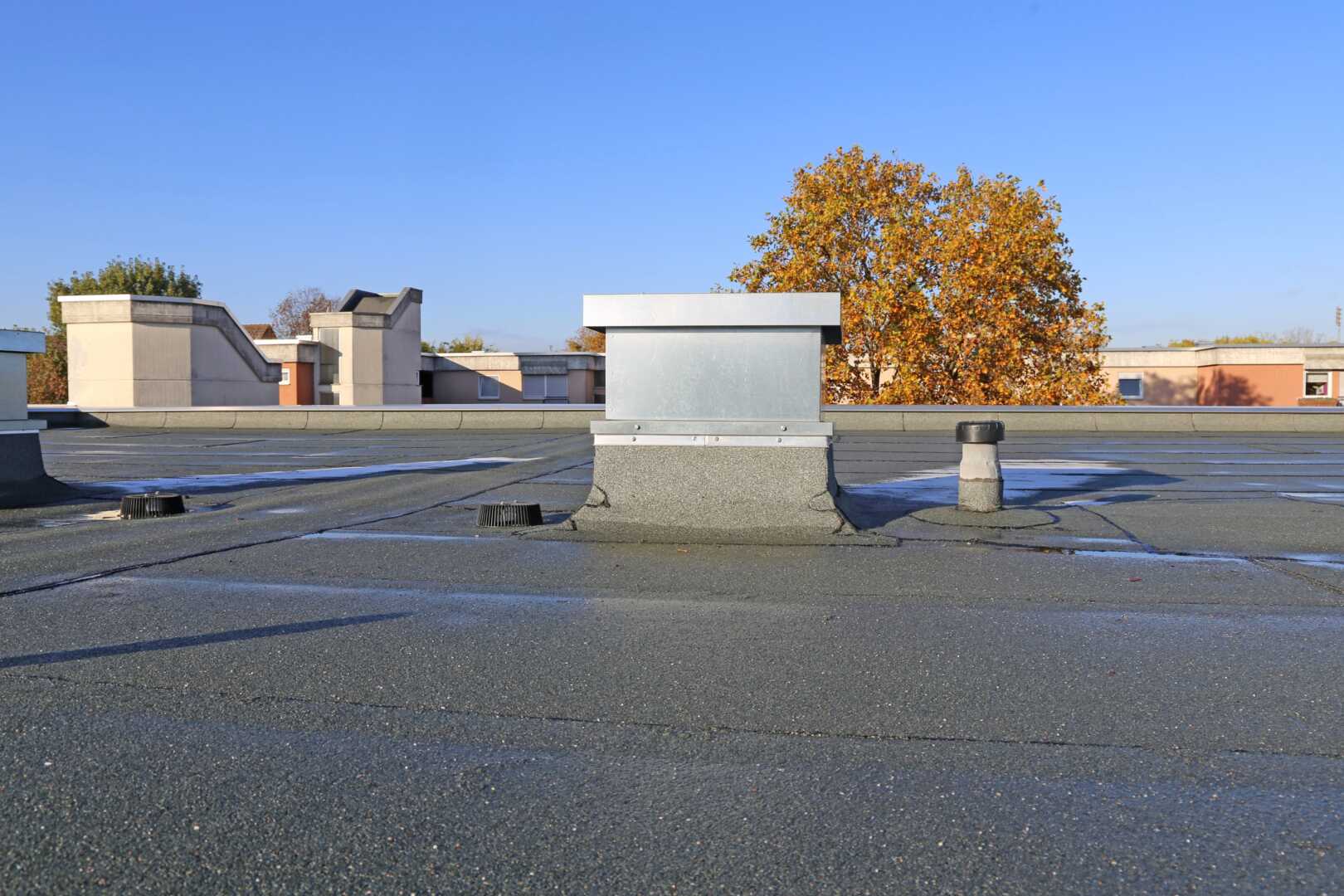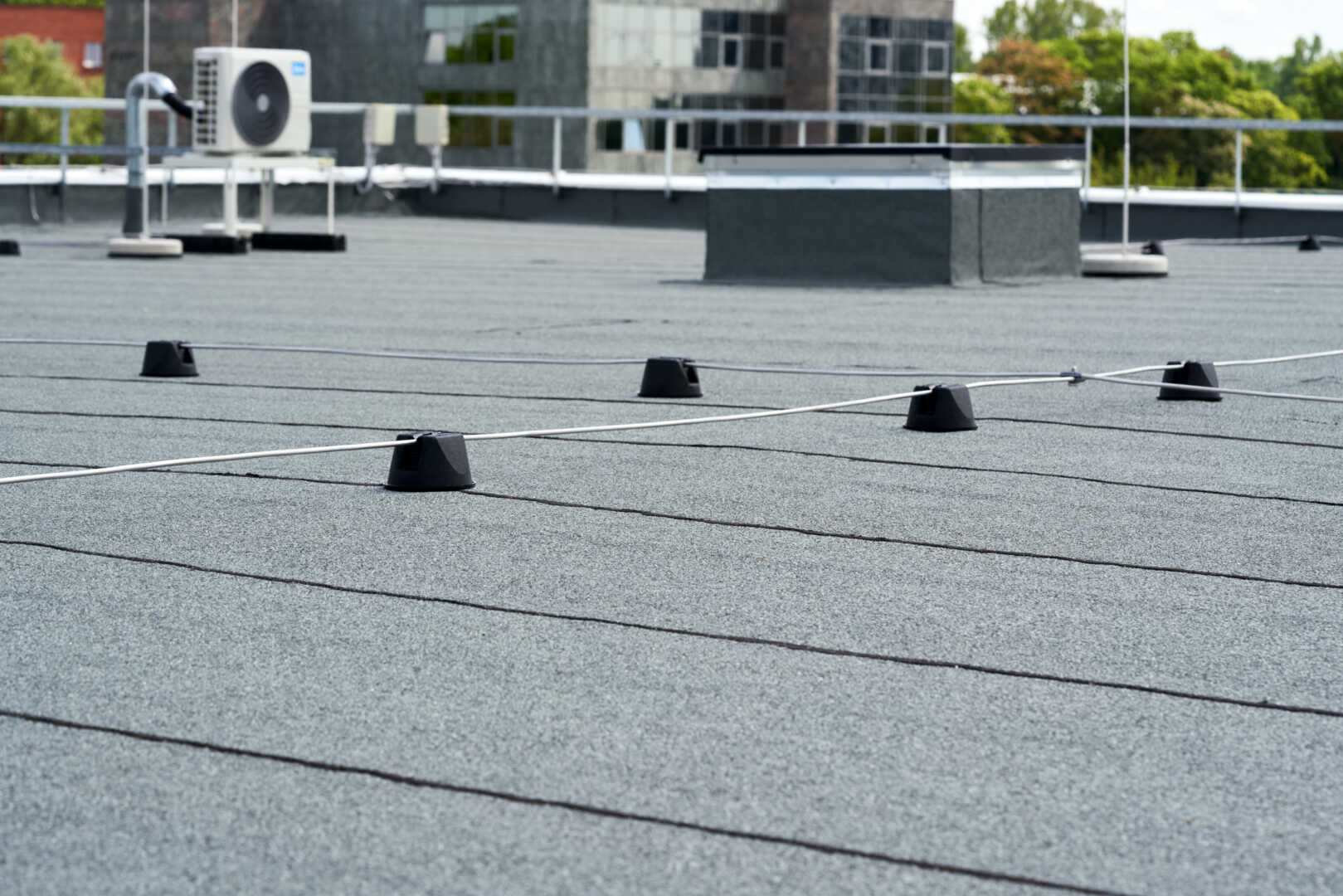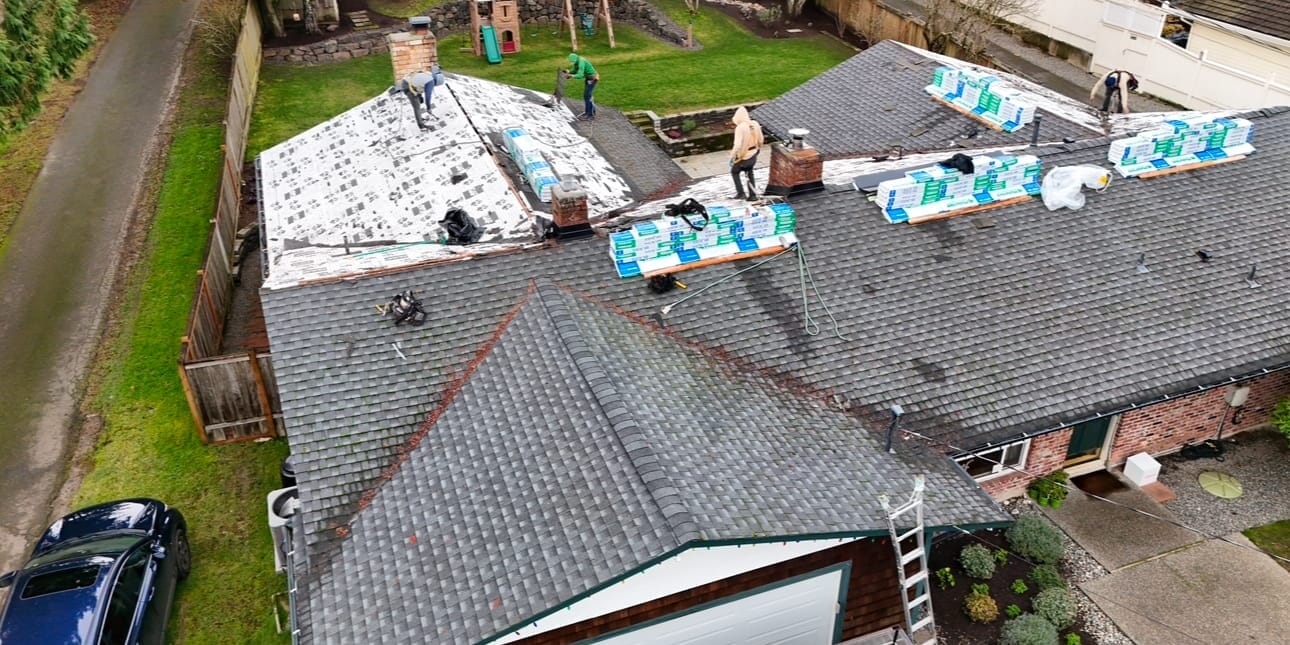Pros and Cons of Choosing a Flat Roof for Your Home
By K Single Corp Roofing & General Contractor

Most homes in the Seattle Metro are built with a sloped roof. In recent years, however, more and more homeowners have jumped on the flat roof bandwagon. Not only is a flat roof aesthetically pleasing, it’s also energy efficient and cheaper upfront. Of course, a flat roof also comes with some drawbacks to consider, including a shorter lifespan. To help you zero in on whether a flat roof is a good idea for your particular home, we’ve compiled this informative list of pros and cons.
What is a Flat Roof?
First and foremost, let’s go over what a flat roof is. Put simply, a flat roof has a slope with an incline of less than 10 degrees. In the past, this type of roof was reserved for commercial buildings. These days, however, it’s an exciting feature that may be seen on some residential properties in the Seattle area. While a traditional sloped roof has one or more peaks, flat roofs don’t have any peaks.
Benefits of Flat Roofs
As with any roofing type, it’s important to consider the advantages of flat roofs, including:
Lower Upfront Investment
If you opt for a flat roof, you can expect to pay more upfront than if you were to go with a sloped roof. This is because flat roofs take up less space and as a result require less material. A flat roof will also be cheaper to repair. While roof pricing varies greatly, a 900-square foot flat roof may run you about $7,000 while a sloped roof will be at least $9,000.
Extra Space
A flat roof is versatile, meaning you can utilize the additional space it creates in a number of ways. For example, it can allow for a rooftop garden, which will not only increase aesthetic appeal but may also minimize stormwater runoff and even increase cooling for the inside of your home. Another option is to add a home office or even a relaxation area you can turn to if you want some fresh air after a long day.
Energy Efficiency
If you’re looking for an eco-friendly roofing option, a flat roof should be on your radar. Unlike sloped roofs which may trap warm air or cause cooler air to escape, a flat roof has less attic space and is therefore more efficient. With a flat roof, you may be able to reduce your heating and cooling costs. In addition, you can choose a flat roof that’s made with recycled rubber or another green material.
Drawbacks of Flat Roofs
Here’s a look at the most noteworthy disadvantages of flat roofs.
Leaks
Flat roofs are particularly prone to leaks, especially if the installer failed to properly secure the seams of the membrane. Furthermore, it can be difficult to pinpoint leaks on a flat roof because water may migrate far from their source. Don’t be surprised if you notice the leak from a flat roof inside of your property.
Shorter Life Span
While a flat roof is cheaper than a traditional sloped roof upfront, it won’t last as long. In general, flat roofs have a lifespan of 10 to 20 years. You might be able to increase this time frame to 30 years with a rubber or metal membrane. However, sloped roofs usually last 30 years or longer, making them a better investment in the long run.
Punctures
During severe weather conditions in Seattle, flat roofs are susceptible to punctures. If a major storm hits your area, a tree branch may fall onto your roof and puncture its material. Punctures can be time-consuming and expensive to resolve, especially if they happen frequently. Plus they may compromise the integrity of your roofing structure.
Ice Dams and Pooling Water
Due to its shallow shape, rain may have trouble moving efficiently to the gutters on a flat roof. In the event there’s a low spot, water can collect and increase the risk of leaks. During the winter season, ice dams may form in the low spot, potentially damaging the roofing material. In contrast, with a sloped roof, rainwater can move to the gutters efficiently, reducing the negative impacts of low spots. If you do choose a flat roof, make sure to explore all your options for materials and weatherproofing.

Flat Roofs vs. Sloped Roofs: How to Decide
At the end of the day, it’s up to you to decide whether you’d be better off with a flat roof or a sloped style. If you’re looking to spend less money upfront and want your property to stand out from the crowd, a flat roof is likely your best bet. A flat roof is also ideal if you’d like to take advantage of the additional space it offers and prefer an environmentally friendly option.
However, if your goal is a durable, weather resistant roof that stands the test of time, you may want to go the traditional route and opt for a sloped roof, especially if you have the funds to pay for it. No matter which roof you pick, be sure to consult with a professional roofer who can evaluate your property and goals and provide you with a solid recommendation.
April 21, 2025
How Much Does Roof Replacement Cost?
Interested in a Flat Roof for Your Seattle Area Property? Schedule Your FREE Estimate With K Single Corp Today
If you’re wondering whether a flat roof is right for your home, don’t hesitate to contact K Single Corp today. In a FREE estimate, we can inform you of whether it’s a worthwhile investment and answer any questions you may have. We look forward to hearing from you!

